
PHYSICS WORLD
metrics 2024
Unveiling Innovations in the World of Physics
Introduction
PHYSICS WORLD, published by IOP Publishing Ltd, is a distinguished journal in the realm of physics and astronomy, focusing on disseminating insights and developments from the broad spectrum of the discipline. Since its inception in 1994, this journal has aimed to bring together researchers, educators, and students, facilitating an engaging dialogue that spans theoretical and experimental advances in physics. Although currently categorized in the Q4 quartile for general physics and astronomy, PHYSICS WORLD contributes significantly by providing a platform for both emerging and established researchers to publish their findings, thus enhancing the collective knowledge within the field. With its dedicated focus on accessibility and collaboration, it serves as a vital resource for those looking to stay informed on the latest trends, research breakthroughs, and innovations in physics. Subscribers can access an array of articles and analysis that explore complex concepts while remaining approachable to a wide audience. For those eager to contribute to the ever-evolving landscape of physics, PHYSICS WORLD remains an important avenue for knowledge exchange and research dissemination.
Metrics 2024
 0.11
0.11 0.50
0.50 0.50
0.50 46
46Metrics History
Rank 2024
Scopus
IF (Web Of Science)
JCI (Web Of Science)
Quartile History
Similar Journals
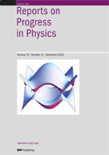
REPORTS ON PROGRESS IN PHYSICS
Charting new territories in the realm of physics and astronomy.Reports on Progress in Physics is a prestigious scholarly journal published by IOP Publishing Ltd, based in the United Kingdom. With an illustrious history dating back to 1934, this journal serves as a vital resource for researchers and professionals in the fields of physics and astronomy, offering comprehensive overviews of significant developments in these disciplines. It holds a commendable Q1 classification in both Medicine (miscellaneous) and Physics and Astronomy (miscellaneous) categories, further underscored by its impressive ranking as 4th out of 243 in the general physics and astronomy sector, placing it in the top 2% percentile on Scopus. The journal is dedicated to disseminating high-quality, peer-reviewed articles that facilitate the understanding of complex physical phenomena and their applications. Although it does not currently offer open access options, its rigorous editorial standards ensure that only the most impactful research reaches its wide audience of academics, practitioners, and students, solidifying its role as a cornerstone of knowledge in the physical sciences.
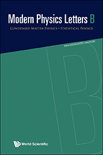
MODERN PHYSICS LETTERS B
Shaping the future of condensed matter and statistical physics.MODERN PHYSICS LETTERS B, published by World Scientific Publishing Co Pte Ltd, is a pivotal journal in the fields of Condensed Matter Physics and Statistical and Nonlinear Physics. With an ISSN of 0217-9849 and an E-ISSN of 1793-6640, this journal has been a prominent platform for innovative physics research since its inception in 1996, catering to a global audience of researchers, professionals, and students alike. Its impact is reflected in its Scopus rankings, with a commendable position in the 65th percentile for Statistical and Nonlinear Physics and the 54th percentile for Condensed Matter Physics. Despite its classification in the Q3 quartile, MODERN PHYSICS LETTERS B is dedicated to advancing knowledge through rapid dissemination of high-quality research, thus playing a critical role in shaping future developments in its disciplines. Published in Singapore, the journal encourages contributions that address contemporary challenges and breakthroughs in physics, fostering an engaged scholarly community.

Frontiers in Physics
Connecting Ideas, Bridging Disciplines in PhysicsFrontiers in Physics is a prestigious peer-reviewed journal published by FRONTIERS MEDIA SA, dedicated to advancing the field of physics through innovative research and interdisciplinary approaches. Established as an Open Access journal in 2013, it has quickly become a vital resource for researchers, professionals, and students alike, with a shining presence in Scopus categories such as Biophysics, Materials Science, Mathematical Physics, and Physical Chemistry. With an impressive array of quartile rankings, including Q2 in several key areas, it positions itself firmly among leading journals in the field, reflecting its commitment to high-quality contributions. The journal's global reach and emphasis on collaborative research not only enhance its visibility in the scientific community but also facilitate a deeper understanding of complex physical phenomena. Researchers are encouraged to submit original works that push the boundaries of knowledge, making Frontiers in Physics an essential platform for the latest advancements in the discipline.

CANADIAN JOURNAL OF PHYSICS
Advancing the frontiers of physics research.The Canadian Journal of Physics, with ISSN 0008-4204 and E-ISSN 1208-6045, is a prominent publication in the field of physics, published by Canadian Science Publishing. Established in 1970, this journal serves as a vital platform for disseminating groundbreaking research and innovative findings across a spectrum of topics within physics and astronomy. With a current Q3 ranking in the miscellaneous category and a respectable Scopus rank of 130 out of 243, the journal ranks within the 46th percentile, confirming its relevance and contribution to the scientific community. Researchers, professionals, and students are encouraged to submit their work for consideration in this esteemed journal, which aims to foster scholarly exchange and advance knowledge in the physical sciences. Although the journal operates under a traditional access model, its rich archive and contemporary insights ensure that it remains a critical resource for anyone invested in the dynamics of physics.
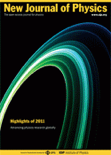
NEW JOURNAL OF PHYSICS
Connecting global minds through groundbreaking physics.NEW JOURNAL OF PHYSICS, published by IOP Publishing Ltd, is a prestigious open-access journal that has been at the forefront of the physics community since its inception in 1998. With an impact factor that places it in the Q1 category of Physics and Astronomy (miscellaneous) and a commendable ranking of #49 out of 243 in the general physics and astronomy category according to Scopus, this journal is recognized for its significant contribution to advancing research in the field. The journal caters to a broad scope of topics, providing a platform for the dissemination of cutting-edge research findings and innovative theoretical explorations. Operating from the United Kingdom, it offers a truly international perspective, making its contents accessible and impactful to a global audience. With robust open-access options, the NEW JOURNAL OF PHYSICS ensures that research findings are freely available, promoting collaboration and knowledge sharing among researchers, professionals, and students alike. This commitment to accessibility, combined with its high-quality content, makes it an essential resource for anyone engaged in the physics community.

TECHNICAL PHYSICS LETTERS
Illuminating Pathways in Technical Physics ResearchTechnical Physics Letters, an esteemed publication of MAIK Nauka/Interperiodica/Springer, serves as a pivotal platform for advancing the field of physics and astronomy since its establishment in 1996. This journal, with its ISSN 1063-7850 and e-ISSN 1090-6533, not only publishes high-quality research articles but also encourages innovative discussions and practical applications within the diverse realms of technical physics. With a solid reputation reflected in its Q3 category ranking within the broader physics and astronomy landscape, it aims to connect researchers and professionals who seek to address contemporary challenges and encourage multidisciplinary approaches to complex scientific problems. Although the journal does not currently offer open access options, it remains accessible to a wide readership, fostering a collaborative spirit among the scientific community. As it converges its efforts from 1996 to 2024, Technical Physics Letters is poised to be an essential resource for anyone looking to stay at the forefront of physics research.
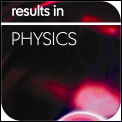
Results in Physics
Shaping the Future of Physics ResearchResults in Physics, an esteemed open-access journal published by ELSEVIER, has been a prominent platform for disseminating cutting-edge research in the field of physics since its establishment in 2011. With its ISSN 2211-3797 and E-ISSN 2211-3797, this journal proudly holds a Q2 ranking in the Physics and Astronomy category for 2023, showcasing its significance and quality within the scientific community. With a remarkable Scopus rank of #28 out of 243 in the general physics and astronomy domain, placing it within the 88th percentile, Results in Physics serves as a vital resource for researchers, professionals, and students alike, fostering a collaborative environment for the advancement of knowledge across various subfields. The journal aims to provide a rapid and unrestricted access to innovative findings, encouraging open scientific dialogue and enhancing the visibility of breakthrough research. Located in the Netherlands at RADARWEG 29, 1043 NX AMSTERDAM, Results in Physics continues to uphold its commitment to excellence and accessibility in the ever-evolving landscape of physics research.
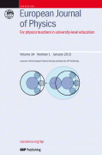
EUROPEAN JOURNAL OF PHYSICS
Exploring the Depths of Scientific DiscoveryEuropean Journal of Physics, published by IOP Publishing Ltd, is a premier international journal serving the diverse field of physics and astronomy. With a commitment to advancing scientific knowledge since its inception in 1980, the journal provides a platform for original research articles, reviews, and topical discussions in various domains, including theoretical and experimental physics. Operating out of the United Kingdom, the journal has achieved a commendable Q2 ranking in the Physics and Astronomy (miscellaneous) category for 2023, reflecting its robust influence in the academic community, alongside a notable Scopus Rank that underscores its relevance in both the Social Sciences and General Physics and Astronomy fields. Although it does not currently offer open access, the journal's traditional publication model ensures rigorous peer review, maintaining high scholarly standards that are imperative for researchers, professionals, and students striving to stay ahead in their respective fields. Don't miss the opportunity to engage with cutting-edge research and contribute to the ongoing dialogue in physics by accessing this vital resource.
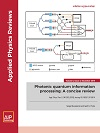
Applied Physics Reviews
Navigating the Landscape of Applied Physics AdvancementsApplied Physics Reviews, published by AIP Publishing, is a premier journal prominently positioned in the field of physics and astronomy. With an impressive impact factor that reflects its significance, this journal ranks in the 1st quartile (Q1) in 2023 and holds the 9th position out of 243 journals in General Physics and Astronomy according to Scopus, placing it in the 96th percentile of its category. Established as a vital platform for the dissemination of groundbreaking research and reviews, Applied Physics Reviews aims to bridge theoretical and experimental studies, enabling a comprehensive understanding of applied physics advancements. Although not open access, the journal provides a rich resource for researchers, professionals, and students keen on exploring the latest developments and trends within applied physics, offering insights that are crucial for both academic and industrial applications. With a converged timeline from 2014 to 2024, this journal continues to foster significant contributions to the field and encourages a collaborative dialogue among scholars and practitioners.
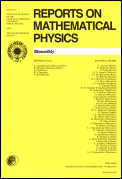
REPORTS ON MATHEMATICAL PHYSICS
Unveiling Complexities in Mathematical PhysicsREPORTS ON MATHEMATICAL PHYSICS is a distinguished journal published by PERGAMON-ELSEVIER SCIENCE LTD, focusing on the intricate interplay between mathematics and physics. Established in the United Kingdom, this journal has been contributing to the academic community since its inception, publishing significant research findings that explore the theoretical underpinnings of physical phenomena. With an ISSN of 0034-4877 and an E-ISSN of 1879-0674, the journal maintains a consistent publishing history, converging research from 1970 to 2024. It is currently ranked Q3 in both Mathematical Physics and Statistical and Nonlinear Physics categories, reflecting its commitment to maintaining a high standard of scholarly work. Although it lacks Open Access options, its targeted audience of researchers, professionals, and students will find invaluable insights into advanced mathematical methods, statistical applications, and innovative approaches in physics. With its esteemed reputation and critical role in the field, REPORTS ON MATHEMATICAL PHYSICS continues to be an essential resource for those seeking to deepen their understanding of mathematical applications in physical systems.